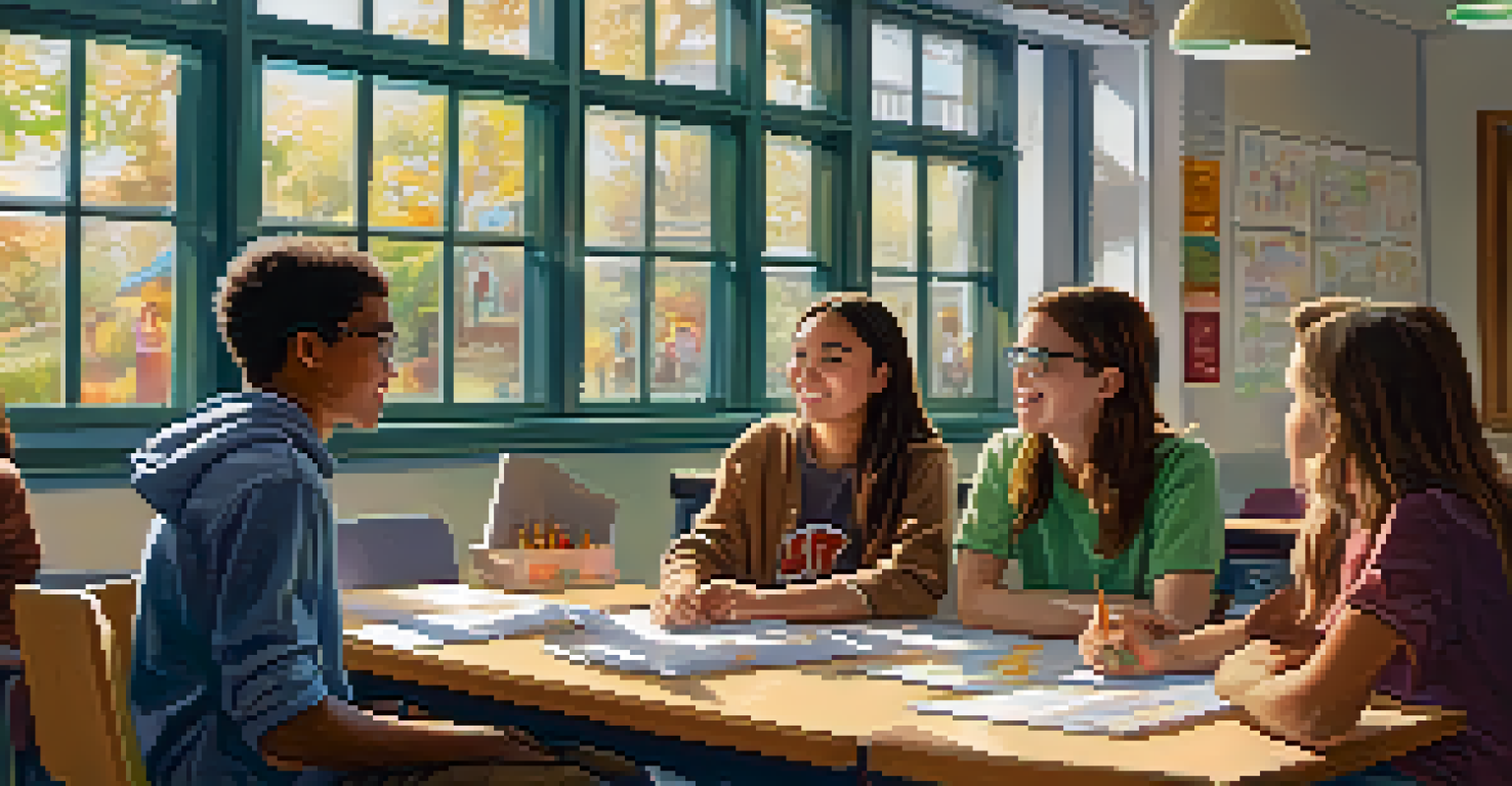The Role of Reflection in Community-Based Learning

What is Community-Based Learning?
Community-based learning (CBL) is an educational approach that combines classroom learning with real-world community engagement. It allows students to apply theoretical knowledge to practical situations, fostering a deeper understanding of both the subject matter and the community. This hands-on experience not only enhances learning but also encourages students to develop a sense of civic responsibility and social awareness.
Reflection is one of the most important processes for learning. It helps us understand our experiences and improve future actions.
In CBL, students often engage with local organizations, participate in service projects, or work on community issues. This approach not only benefits the community but also enriches the students' educational experience. By immersing themselves in real-world challenges, students can see the direct impact of their work, which can be incredibly motivating.
Ultimately, community-based learning transforms the educational landscape by bridging the gap between theory and practice. It encourages collaboration, critical thinking, and problem-solving skills, which are essential for students as they prepare to enter the workforce or become active community members.
The Importance of Reflection in Learning
Reflection is the process of thinking deeply about experiences, actions, and decisions. In the context of learning, it allows individuals to assess what they’ve learned, how they’ve grown, and what they might do differently in the future. By engaging in reflection, learners can turn experiences into valuable lessons, leading to enhanced personal and academic growth.

In community-based learning, reflection becomes even more critical. It encourages students to evaluate their contributions to the community and understand the broader social implications of their actions. Through reflective practices, students can connect their experiences to their academic coursework, making the learning process more meaningful and integrated.
CBL Enhances Learning Through Action
Community-based learning combines classroom knowledge with real-world engagement, fostering a deeper understanding and civic responsibility.
Moreover, reflection fosters a growth mindset, where students learn to view challenges as opportunities for learning. This perspective not only benefits their educational journey but also prepares them for future endeavors, whether in their careers or personal lives.
Types of Reflective Practices
There are various reflective practices that students can engage in during community-based learning. Journaling is one of the most common methods, where students write about their experiences, feelings, and insights regularly. This practice encourages them to articulate their thoughts clearly and track their growth over time.
The only real mistake is the one from which we learn nothing.
Group discussions also play a vital role in reflection. Sharing experiences with peers can provide new perspectives and insights that individual reflection might miss. These collaborative discussions create a supportive environment where students can openly share their challenges and triumphs, enhancing their learning experience.
Lastly, guided reflections, often facilitated by instructors, can lead to deeper analysis. Questions posed by educators can prompt students to think critically about their experiences, helping them draw connections between their community work and academic concepts.
Benefits of Reflection in Community Learning
Incorporating reflection into community-based learning offers numerous benefits. Firstly, it helps students develop self-awareness, allowing them to recognize their strengths and areas for improvement. This self-awareness is crucial for personal development and can enhance academic performance.
Additionally, reflection can improve critical thinking skills. By analyzing their experiences and considering different viewpoints, students learn to approach problems more creatively and effectively. This skill is invaluable not only in academics but also in their future careers.
Reflection Deepens Learning Insights
Reflective practices allow students to analyze their experiences, leading to personal growth and a more meaningful education.
Finally, reflection can strengthen the connection between students and the community. As students contemplate their impact, they may develop a greater appreciation for the community's needs and challenges, fostering a sense of empathy and commitment to service that extends beyond their learning experience.
Challenges in Implementing Reflection
While reflection is essential, it is not without its challenges. One common issue is that students may feel uncertain about how to reflect effectively. Without guidance, they might struggle to articulate their thoughts or find the process intimidating, which can hinder their learning.
Another challenge is time constraints. With busy schedules, students may find it difficult to dedicate time to reflection amidst their other commitments. This can lead to superficial reflection, where they miss out on the deeper insights that true reflection can provide.
Lastly, there may be resistance from students who do not see the value in reflective practices. Some may perceive reflection as an additional task rather than a beneficial part of their learning journey. Overcoming this mindset requires educators to emphasize the importance and benefits of reflection consistently.
Strategies to Foster Effective Reflection
To encourage effective reflection, educators can begin by providing clear guidelines and frameworks. Teaching students various reflective models, such as Gibbs’ Reflective Cycle or Kolb’s Experiential Learning Cycle, can help structure their thoughts and make the process more approachable. These frameworks guide students through the stages of reflection, making it easier to analyze their experiences.
Creating a safe and supportive environment is also essential. Students should feel comfortable sharing their thoughts without fear of judgment. Establishing norms for respectful discussions can help foster openness and encourage more meaningful reflections.
Challenges of Implementing Reflection
Students may struggle with reflection due to uncertainty, time constraints, and a lack of perceived value in the process.
Finally, integrating technology can enhance reflective practices. Digital platforms, such as blogs or online journals, offer students new ways to express their reflections. These platforms can also facilitate peer feedback, making the reflective process more interactive and engaging.
Conclusion: The Lasting Impact of Reflection
In conclusion, reflection plays a pivotal role in community-based learning, enriching the educational experience for students. By encouraging them to think critically about their experiences, reflection helps students develop essential skills and a deeper understanding of their community. The lessons learned through reflection can have a lasting impact, shaping their future actions and perspectives.
Moreover, as students engage in reflective practices, they become more active participants in their learning journeys. They learn to value their experiences and apply those lessons not only in academics but also in their personal lives and community involvement.

Ultimately, fostering a culture of reflection in community-based learning not only enhances the educational experience but also prepares students to be thoughtful, engaged citizens who are ready to tackle the challenges of tomorrow.